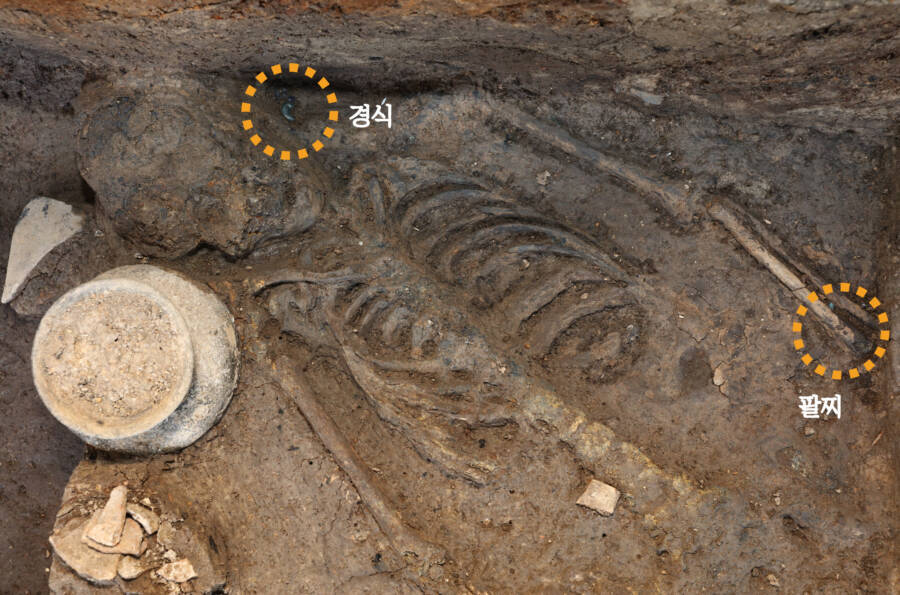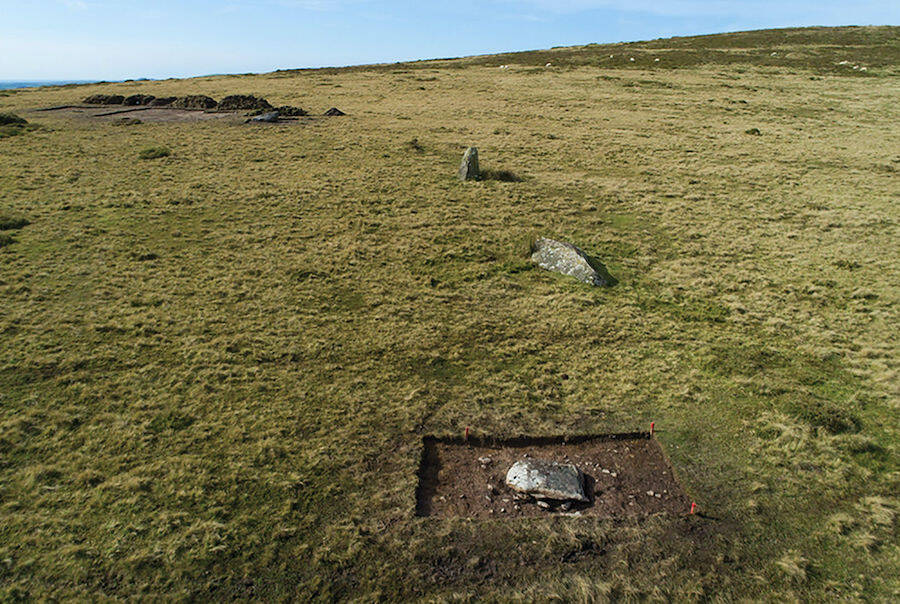Ancient Human Remains Found At South Korea’s Wolseong Palace Confirm Sacrificial Myths

Gyeongju National Research Institute of Cultural HeritageThe remains found this year follow the discovery of human remains at the palace in 2017.
Archaeologists exploring South Korea’s Wolseong Palace this year found the ancient remains of a young woman. They suspect that she — and an ancient couple found in 2017 — were sacrificed to ensure the palace’s fortitude.
The idea that people living in South Korea during the Silla Dynasty (between 57 B.C. and 935 A.D.) sacrificed humans during construction projects had long been considered a myth. But the 2017 discovery hinted that this “myth” was actually true — and this year’s discovery confirmed it.
“Now with the additional discovery, there’s no denying Silla’s practice of human sacrifice,” noted Soongsil University professor Choi Byung-heon.
The three victims were found in close proximity to each other. Each lay facing the sky, and none showed obvious signs of struggle. Archaeologists also found a number of items by their bodies, including pottery.
Some believe that these victims are the tip of the iceberg. During earlier excavations, archaeologists found 20 bodies on the palace grounds.
However, those remains had badly deteriorated — making it impossible to tell whether they were sacrificial victims.
200-Year-Old Shipwreck Found In Latvia

Rīgas Brīvosta/FacebookThe vessel was discovered just below the sand at a Latvian beach.
This fall, archaeologists found a mysterious 40-foot shipwreck on a beach near Riga, Latvia. But as exciting as the discovery was, they had to rebury it — because the sunlight and air began to cause the vessel to decay.
Now, experts are trying to figure out the best way to preserve the relic.
“Finding such a large fragment of shipwreck on the coast is a rare event and preserving it for future generations and exhibiting it is a difficult task,” said archaeologist Janis Meinerts. “The worst thing would be to do it recklessly.”
The exact origins of the ship remain unknown, but it’s thought to be about 200 years old. It also boasts copper nails in the hull — leading some experts to believe that it’s a 19th-century British Royal Navy warship.
They think that the ship in question was “lost on patrol in the Baltics” and never seen again — until now. Only time will tell if that theory is correct.
The “Original” Stonehenge Found In Wales

A. Stanford/M. P. Pearson et. al./AntiquityRemnants of the “original” Stonehenge in Wales.
Stonehenge is famously located in England. But according to legend, it was first located in Ireland, until it was moved by the wizard Merlin. This year, archaeologists discovered a grain of truth in the Merlin myth.
While studying a site in Waun Mawn in Wales — which was previously considered part of Ireland — archaeologists found a series of “stone-holes” in a circle. Significantly, one of them has an imprint that matches an “unusual” cross-section of a Stonehenge bluestone “like a key in a lock.”
The archaeologists also confirmed their theory in other ways. They studied soil samples at Wuan Mawn and found that the soil predated Stonehenge. They also analyzed rock chips at the Welsh site and found that they matched the rocks at Stonehenge. In addition, they measured the diameter of the Welsh circle, which matched the English one.
“This is the culmination of 20 years of research,” stated Mike Parker Pearson, the University College London professor who found the “original” Stonehenge. “It’s one of the most important discoveries I’ve ever made.”
Their findings seem to confirm at least one part of the legend first put forward by Geoffrey of Monmouth in his 1136 book, History of the Kings of Britain. In the book, he suggested that Merlin moved the stones from a site called Giants’ Dance in Ireland to capture their magical powers.
“My word, it’s tempting to believe it,” said Parker Pearson. “We may well have just found what Geoffrey called the Giants’ Dance.”





